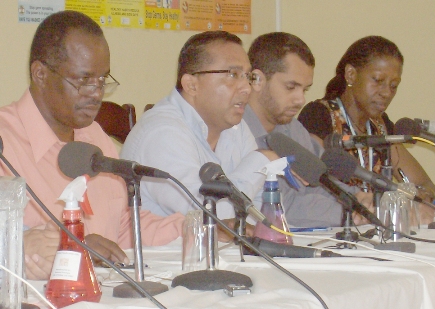
There is no doubt that the hype around last week’s news was centered on Influenza A (H1N1). Reports on the media’s new found star oversaturated the airwaves. Many viewers developed mental flu-like symptoms because of the constant focus on the virus. Experts tried relaxing the residents by emphasizing that the most dangerous effect of the virus would be large-scale panic. The advice of the experts had residents living in a state of confusion because they emphasized two points. First, “It is important that we do not panic… do not rush to the hospital at sign of every cough or sneeze.” Then they say, “It is important in the fight against the virus that you report to the nearest facilities as quickly as possible.”
Last week the Influenza A (H1N1) was the story of the day but today Belizeans are acting like the virus was last week’s news. This behaviour stems from the fact that Belize has been sending samples on cases of interest to CAREC in Trinidad and Tobago for over a week now and not one of the 16 samples sent has tested positive for Influenza A (H1N1). The virus is like a one-week celebrity. It burst on the scene, was adored by the media, changed its name and now it is almost forgotten. Now that the experts have no need to suppress a large-scale panic, there message is that we should not relax and take the situation lightly. However, even they have eased off in their sense of urgency. Last week there were daily press briefings. That dissolved this week to updates via e-mail and faxes.
Though the epidemic has lost its public interest, the latest reports prove that there is reason to be concerned. At 5:00 p.m. on Monday, May 4, the Director of Health services called a meeting with the CEO in the Ministry of Education, representatives from NEMO, Customs, Immigration, Regional Managers and Associates from the Ministry of Health and Karl Heusner Memorial Hospital to discuss the fact that there have been three confirmed cases in the Mexican State of Quintana Roo. In addition, there are 39 suspected cases and 11 cases hospitalized in Quintana Roo. These cases in Quintana Roo are the nearest reported positive tests to the Belizean border. The authorities will continue to watch the pattern of the virus transmission in Mexico in their attempt to combat the tyrant at the border.
Locally, the Ministry of Health is awaiting the results of 14 samples sent to CAREC on Monday, May 4. These samples are from the Orange Walk, Belize and Cayo districts. The virus appeared to have peaked in Mexico but is on the rise in the United States, Canada and Europe. Dr. Michael Pitts has warned that these epidemics usually run in waves. Therefore, though the spreading has slowed in Mexico, it is important that our surveillance activities stay on high alert. Mass gatherings are still discouraged at the moment.




